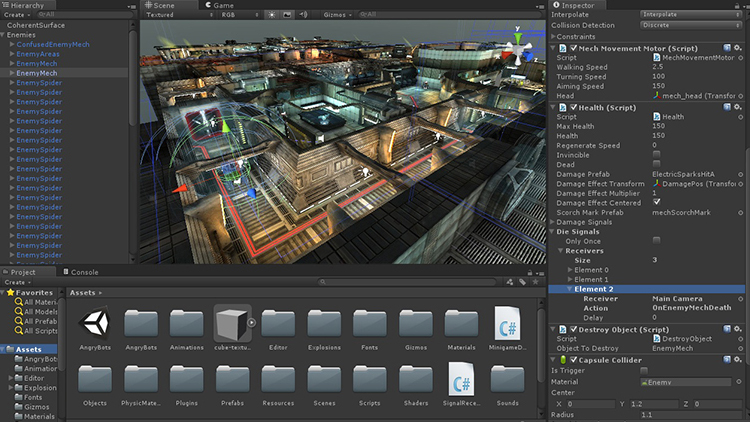Implementing More Complex Game Mechanics
Advanced game mechanics take your game to the next level, adding depth and complexity to gameplay. In this chapter, we’ll explore how to implement various advanced mechanics, from power-ups to enemies, animations, particle effects, and physics-based interactions.
Example 1: Implementing Power-Ups
Power-ups are special items that enhance the player’s abilities temporarily. Create a power-up object in your game and write scripts to handle interactions with the player. For example, a speed boost power-up increases the player’s movement speed for a limited time when collected.
Example 2: Designing Enemy AI
Enemies add challenge and excitement to your game. Implement enemy AI using state machines or behavior trees to control their behavior. Define enemy states such as idle, patrol, chase, and attack. Experiment with different AI techniques to create engaging enemy encounters.
Example 3: Introducing Animations
Animations bring your game characters and objects to life. Use Unity’s animation system to create animations for player characters, enemies, and interactive objects. Define animations for movements, attacks, and interactions, and trigger them using scripts or animation events.
Example 4: Creating Particle Effects
Particle effects add visual flair and feedback to your game. Design particle effects for explosions, magic spells, environmental effects, and more. Use Unity’s particle system to customize particle behavior, appearance, and emission properties. Experiment with different particle textures and shapes to achieve the desired effects.
Example 5: Implementing Physics-Based Interactions
Physics-based interactions add realism and immersion to your game. Use Unity’s physics engine to simulate realistic object interactions, such as collisions, gravity, and ragdoll physics. Experiment with rigidbody components, colliders, and physics materials to create dynamic and interactive environments.
Example 6: Designing Interactive Objects
Interactive objects add depth and interactivity to your game world. Create objects that respond to player actions, such as buttons, levers, and switches. Write scripts to handle object interactions, such as opening doors, activating traps, or triggering environmental changes.
Example 7: Adding Collectibles and Rewards
Collectibles and rewards incentivize player exploration and engagement. Design collectible items, such as coins, gems, or power crystals, scattered throughout your game levels. Write scripts to detect player collisions with collectibles and provide rewards, such as points, health boosts, or special abilities.
Example 8: Implementing Puzzle Mechanics
Puzzle mechanics challenge players’ problem-solving skills and critical thinking. Design puzzles that require players to manipulate objects, solve riddles, or complete challenges to progress. Write scripts to control puzzle elements, such as moving platforms, rotating objects, or activating mechanisms.
Example 9: Creating Dynamic Level Design
Dynamic level design keeps players engaged and surprised. Design levels with changing environments, obstacles, and enemy encounters. Use procedural generation techniques to create random or semi-random level layouts, ensuring each playthrough feels unique and challenging.
Example 10: Balancing Game Mechanics
Balancing game mechanics is essential for providing a fair and enjoyable experience. Test and iterate on your game mechanics to ensure they offer a suitable level of challenge and reward. Adjust parameters such as enemy difficulty, power-up effectiveness, and level progression to achieve balance and pacing.
By exploring these advanced game mechanics and implementing them in your Unity project, you’ll enhance the depth, challenge, and immersion of your game. Experiment with different mechanics, iterate on your designs, and tailor them to suit your game’s theme, genre, and target audience. With creativity and practice, you’ll create engaging and memorable gameplay experiences for players to enjoy.

Leave a Reply